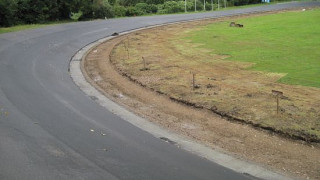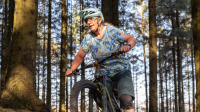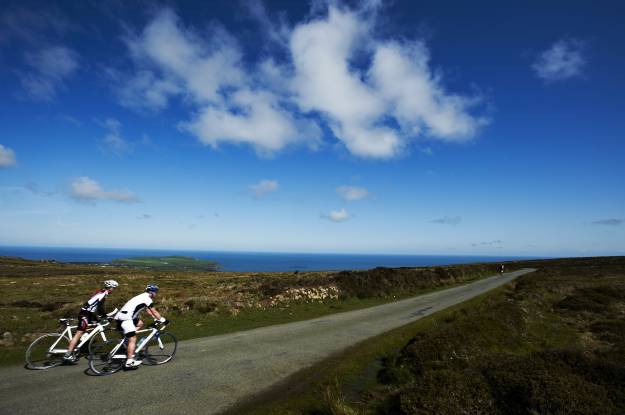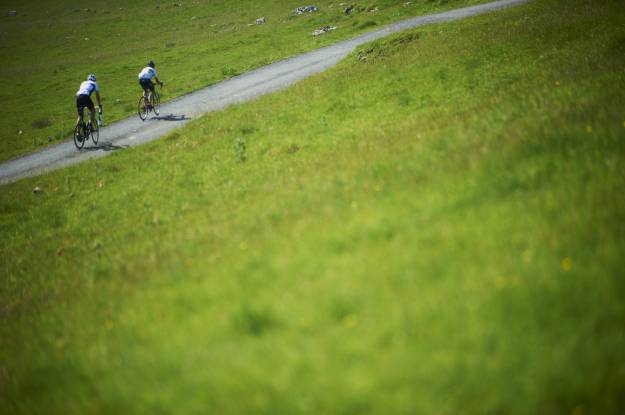Work is on schedule and progressing well on the refurbishment of the Herne Hill Track, in South London, venue for the 1948 Olympics and the immensely popular Good Friday meetings, amongst many other races.
The re-surfacing of the track with special cycling-specific MasterTrack has already been completed. Despite losing a day to torrential rain, the contractors have worked hard to get back on schedule and have now moved on to the in-field "safety zone" and fencing.
The work on the safety zone includes the removal of top-soil, the addition of a sub-base foundation and a final surfacing with a smooth 6mm layer of bitumen. The safety zone is being built on a gentle 1 in 40 camber, which allows for water to run off the track, across the safety zone and into a new drainage system.
The safety zone work is due to be completed on the 19th August, with fencing and track lining work bringing the programme of work to an end on the 6th September.
The six-week project is the first major work to be carried out at the site since the recent signing of a 15-year lease between the landowners, The Dulwich Estate, and British Cycling as secure tenant.
Latest Images (thanks to Jason Cattermole)
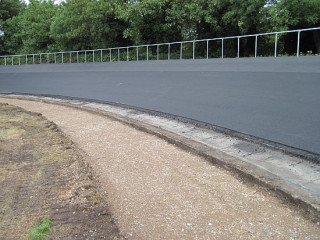
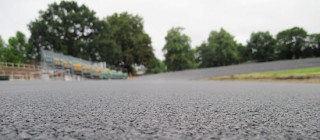
Herne Hill Events
The first events on the new track will be:
7 Sept - Cyclo-Cross meeting
11 Sept - Dave creasy Memorial meeting, themed on the Ghent 6
Full details on the track's own website
Herne Hill Refurbishment - the Background Story
Photos: Daniel Gould - Cycling Weekly
The track condition has been deteriorating for some time to the extent that a number of races, most notably the historic Good Friday Meeting, have been temporarily moved elsewhere. However, funding has been made available through British Cycling's ‘Whole Sport Plan' and a financial bequest from London resident Leonard Lyes.

Lyes, who died in July 2009, was a member of De Laune Cycling Club and regularly officiated at Herne Hill track meetings. He asked his bequest be used "in the pursuit of track cycling" and British Cycling Chief Executive, Ian Drake, said he is sure Lyes would have approved of how this is being utilised:
"I don't doubt that Leonard would be pleased that his generous donation is having such an impact at a venue that was so close to his heart. Getting the track repaired is a huge step forward for the Save the Velodrome campaign and will provide riders of all ages with a fantastic surface on which to enjoy their cycling. Herne Hill is such an iconic venue and British Cycling is both delighted and proud of the role it is playing in helping getting it back to its former glory."
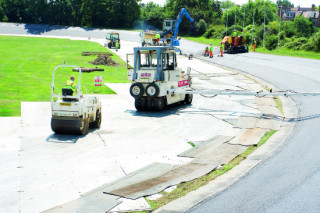
Hillary Peachey, Chair of the Save the Velodrome Campaign, added: "These works are a turning point for the Herne Hill Velodrome. Barely a year ago the future of this incredible site was uncertain; the lack of a long term lease combined with a series of harsh winters was threatening to overcome all the hard work which has been put in to the track over the decades and there was a very real threat of closure.
"At the launch of our campaign to save the Velodrome in late 2010, the Herne Hill Velodrome Trust's immediate aim was to secure a long term lease on the track in order to unlock the funding British Cycling had allocated to resurfacing. British Cycling's dedication to the project and professional approach resulted in the lease we needed and we all have an immense debt of gratitude to the team.
"And so as the physical works begin on the track, the Trust itself is now fundraising in earnest to bring together the plans and strategy needed to make the site a viable cycling venue for long in to the future. In time we will be drawing up proposals and inviting cyclists, local residents and politicians to tell us what they think, before we submit a planning application to Southwark Council. And of course, we are all looking forward to that first spin on the new track".
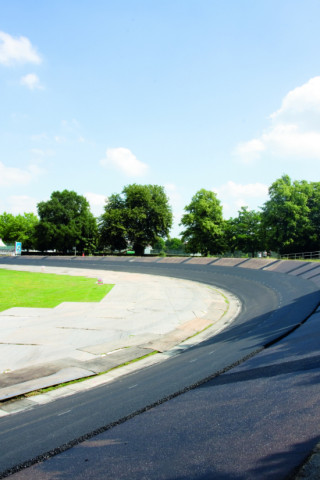
John Major, Chief Executive of The Dulwich Estate, said: "The Dulwich Estate is delighted that the track resurfacing is underway, ensuring that cycling can continue at this historic site."
Work on the track is expected to last around six weeks, and British Cycling's Facilities Officer Patrick Flanagan explains what will be happening during this time:
"The track does need extensive structural repairs. It currently has a concrete base with an epoxy resin finish. This finish has failed and cracked, allowing water to enter the structure and, in conjunction with frost, cause extensive damage, alongside some settling of the concrete base."
"The repairs will start with this concrete base, which will be mended with fibre-glass reinforcement at each joint - it was originally made in 10 metre lengths and where these join, unevenness is now a problem. The repairs will provide a strong and very smooth base upon which the new track surface can be laid."
"The track will then be re-surfaced with a special velodrome-specific covering called ‘MasterTrack', a product we developed in conjunction with Tarmac. MasterTrack contains very fine granite stones and is exceptionally smooth, hard and dense, making it ideal for track racing. It is also impervious to water, so damage from the elements will be eliminated."
"The new surface will be 7 metres wide and laying it presents some challenges: its width, combined with the camber, which changes in the bends, and the need for an extremely smooth finish, make it remarkably difficult to lay. Tarmac has developed a unique rig which runs on a track inside the cycling track: this allows them to lay the surface in three wide strips. So, all in all, it's a pretty special project with some unique problems and equally unique solutions."
Regular updates throughout the track work can be found at www.britishcycling.org.uk and www.savethevelodrome.com.

